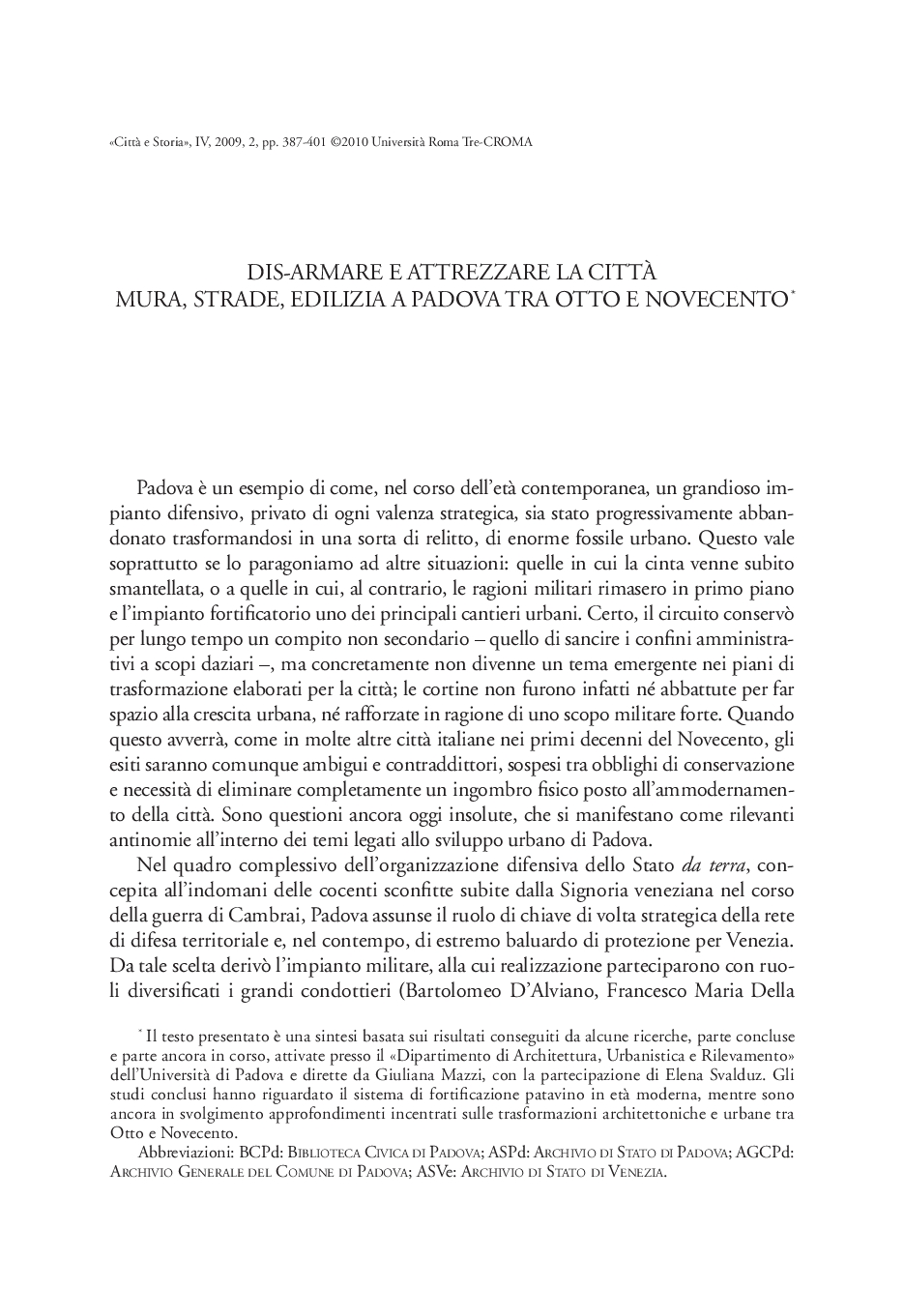Indice dei fascicoli
CITTÀ & STORIA » 2009/2 » Spazi e cultura militare nella città dell'Ottocento
ISSN 1828-6364
Zaggia Stefano
Dis-armare e attrezzare la città: mura, strade, edilizia a Padova tra Otto e Novecento
pp.387-401, DOI 10.17426/69531
Articoli
Abstract: The case study of Padua is an example of how, during the contemporary age, a large defensive system, lost its strategic significance, was gradually abandoned and finally reduced in a sort of wreckage, a huge urban fossil. Because of the lost of military importance, the city wall did not become one of the objects in the process of the urban reorganisation. The fortifications were not dismantled to make room for the urban growth, nor strengthened in reason of military police. The reason of the difficulties in facing the problem of the walls resides in some specific factors: when the Venetian State fell, the fortification system of Padua, morphologically intact, was one of the longest (about 11 km) and enclosed a large area in which many spaces were un-built (gardens, fields, backyards) and constituted nearly half of the total town area. The city could use those spaces to grow. Consequently, as in other Italian cities, the interventions on the walls will be implemented in the early decades of the 20th century.
In 1882 the municipality of Padua bought the walls by the State: the city could freely use it, but couldn’t break it down without State permission. This operation made available some new areas, about 35 hectares of land, formed by the embankments and roads that ran inside and outside of the walls.
Therefore between the 19th and 20th centuries, the relationship between Padua and its defensive infrastructure can be evaluated according to different phases: an initial phase in which the changes introduced by the new concepts of war make the ramparts fall into disuse, while military attention turned in building of barracks; a second phase, after the Unification of Italy, in which only some restricted place of the defensive system were converted to civilian use (for services and housing) especially after the property of the military structure passed to the City; finally a third phase, from the beginning of the 20th century, in which the walls were partially demolished by tracking roads that cut the lead curtain trying to joint the interior space with the urban conglomerates grown in the external areas of the city.
The results will be ambiguous and contradictory, suspended between conservation requirements and the need to completely remove a physical obstruction to modernize the city.

Referenze
- download: n.d.
- Url: http://archivio.centroricercheroma.it/?contenuto=indice-dei-fascicoli&idarticolo=901
- DOI: 10.17426/69531
- citazione: S. Zaggia, Dis-armare e attrezzare la città: mura, strade, edilizia a Padova tra Otto e Novecento, "Città & Storia", IV/2, pp.387-401, DOI: 10.17426/69531

